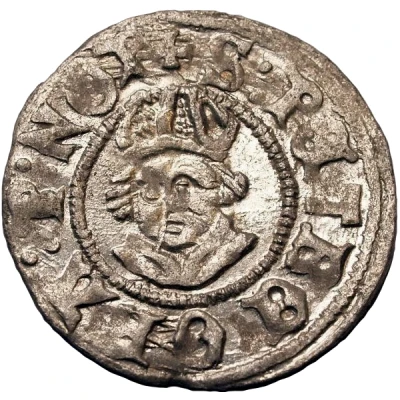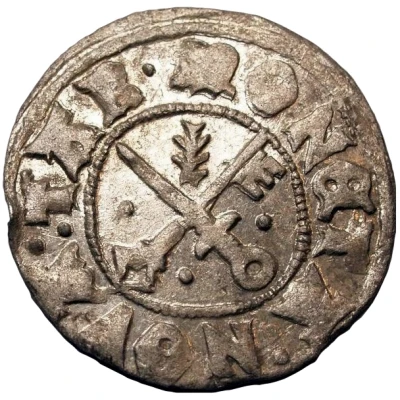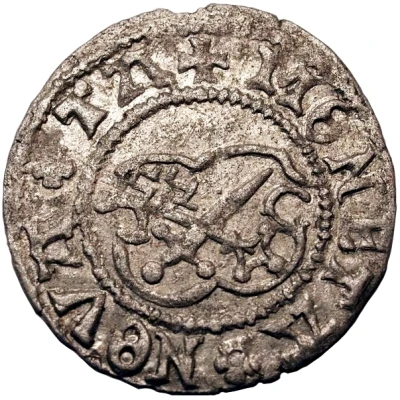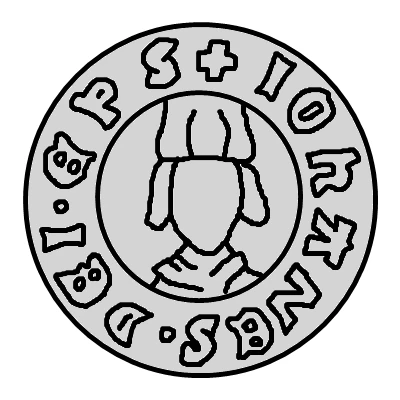
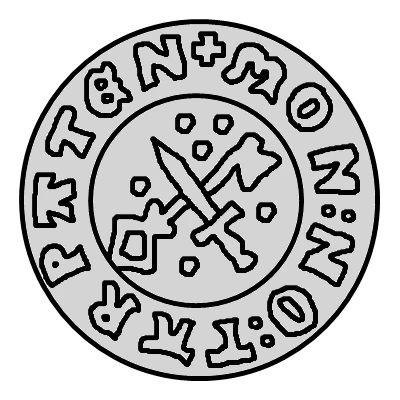

© Sulfur
1 Schilling - Johannes VI Bey ND
| Billon (.1875 silver) | 1.14 g | 18 mm |
| Issuer | Bishopric of Dorpat (Livonian Confederation) |
|---|---|
| Bishop | Johannes VI Bey (1528-1543) |
| Type | Standard circulation coin |
| Years | 1528-1539 |
| Value | 1 Schilling |
| Currency | Schilling (1422-1558) |
| Composition | Billon (.1875 silver) |
| Weight | 1.14 g |
| Diameter | 18 mm |
| Thickness | 0.7 mm |
| Shape | Round (irregular) |
| Technique | Hammered |
| Orientation | Variable alignment ↺ |
| Demonetized | Yes |
| Updated | 2024-10-06 |
| Numista | N#142193 |
|---|---|
| Rarity index | 100% |
Reverse
Crossed sword and key under three dots and surrounded by legend.
Script: Latin (uncial)
Lettering: mON : NO : TARPATEN
Lettering (regular font): MON : NO : TARPATEN
Translation:
Moneta Nova Darpatensis
New coin of Dorpat
Edge
Plain
Comment
There is some confusion about this type. While Fedorov says the type struck for Johannes VI Bey (1528-1543) is surrounded by lone dots, that type more likely belongs to Johannes IV Duesborg (1513-1514), whose type Fedorov does not describe. If Johannes VI Bey does actually have a type similar to this, based on all his other types, there would be three Zs (more than likely degraded into dots) at the top off the reverse.Interesting fact
One interesting fact about this coin is that it was minted during the reign of Johannes VI Bey, who was the Bishop of Dorpat (now known as Tartu, Estonia) from 1528 to 1539. The coin features an image of the bishop on one side and the Livonian Confederation's coat of arms on the other. The use of billon, a silver-copper alloy, was a common practice during this time period, as it allowed for the production of coins with a lower silver content, making them more affordable for everyday transactions. Additionally, the fact that this coin weighs 1.14 grams suggests that it was a relatively small coin, making it easy to handle and transport.
